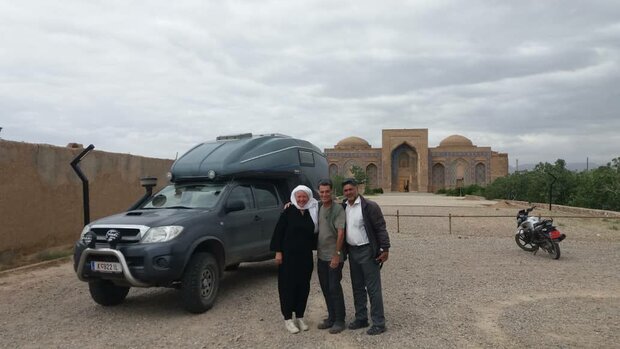European tourists visit northeast Iran

TEHRAN – Following a two-year suspension resulting from COVID-19 restrictions, the first group of European sightseers visited the Khaf county of Khorasan Razavi province, northeast Iran, Khaf’s tourism chief said on Wednesday.
The tourists, which were from Switzerland and Austria, are the first group of foreign tourists visiting the region since the beginning of the current Iranian year (started on March 21), Mehr quoted Mahmoud Ba-Aqideh as saying.
Khaf was considered a major tourism destination before the outbreak of the coronavirus by domestic and foreign travelers, but the pandemic caused the decline of its tourism industry, the official added.
Having been vaccinated and the coronavirus outbreak successfully controlled, domestic tourists have returned to the region, he noted.
Currently, the arrival of the first group of European tourists could promise a resurgence of tourism in the region, he mentioned.
Khaf is known for its historical Asbads (vertical windmills), along with other tourist attractions.
ran seeks UNESCO recognition for arrays of its ancient windmills that can be found in the provinces of Sistan-Baluchestan, South Khorasan, and Khorasan Razavi.
UNESCO says Asbad is a smart technique to grind grains, a technique that goes back to ancient times when the people living in the eastern parts of Iran, in an attempt to adapt themselves to nature and transform environmental obstacles into opportunities, managed to invent it.
Constructed of clay, wood, and straw, those ancient gears which are inherited from preceding generations, are perched on a cliff overlooking the village, milling grain for centuries.
Technically speaking, unlike European windmills, the Persian design is powered by blades arrayed on a vertical axis in which the energy of wind is translated down without the need for any of the intermediary gears found on the horizontal-axis windmills.
The development of Asbads took place due to strong and continuous 120-day winds, which annually sweep through the east and southeast of the Iranian Plateau from late May to late September.
According to the Encyclopedia Britannica, the earliest known references to windmills are to a Persian millwright in 644 CE and windmills in Seistan [Sistan], Iran, in 915 CE. In the early second millennium, some Eastern and Western states acquired the technology of making mills from Persia, though the prototype design constantly underwent amendments over time.
ABU/MG
Leave a Comment